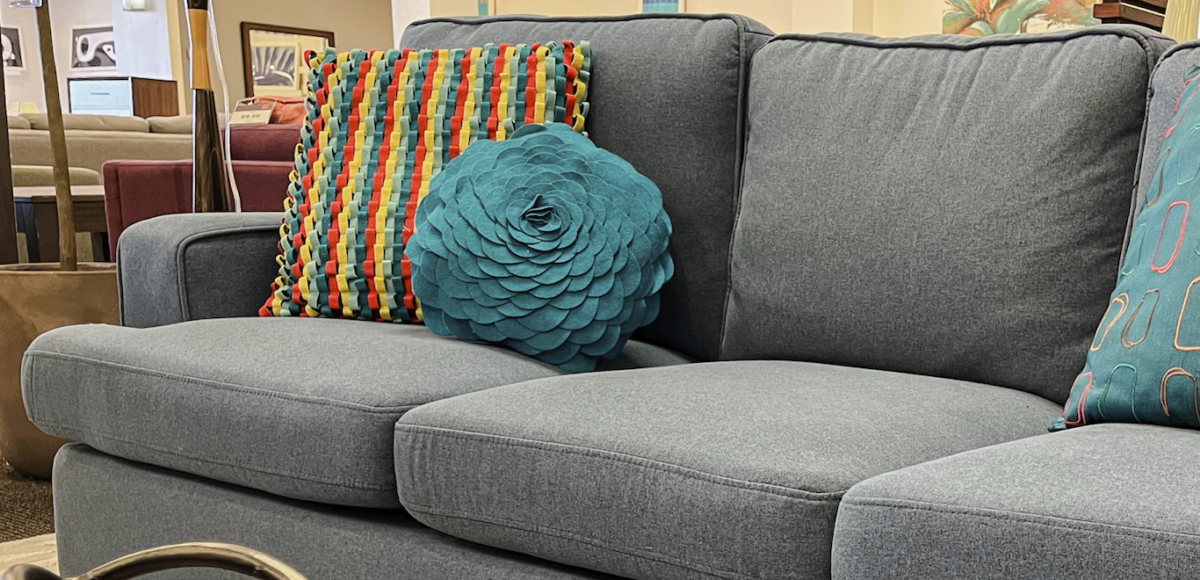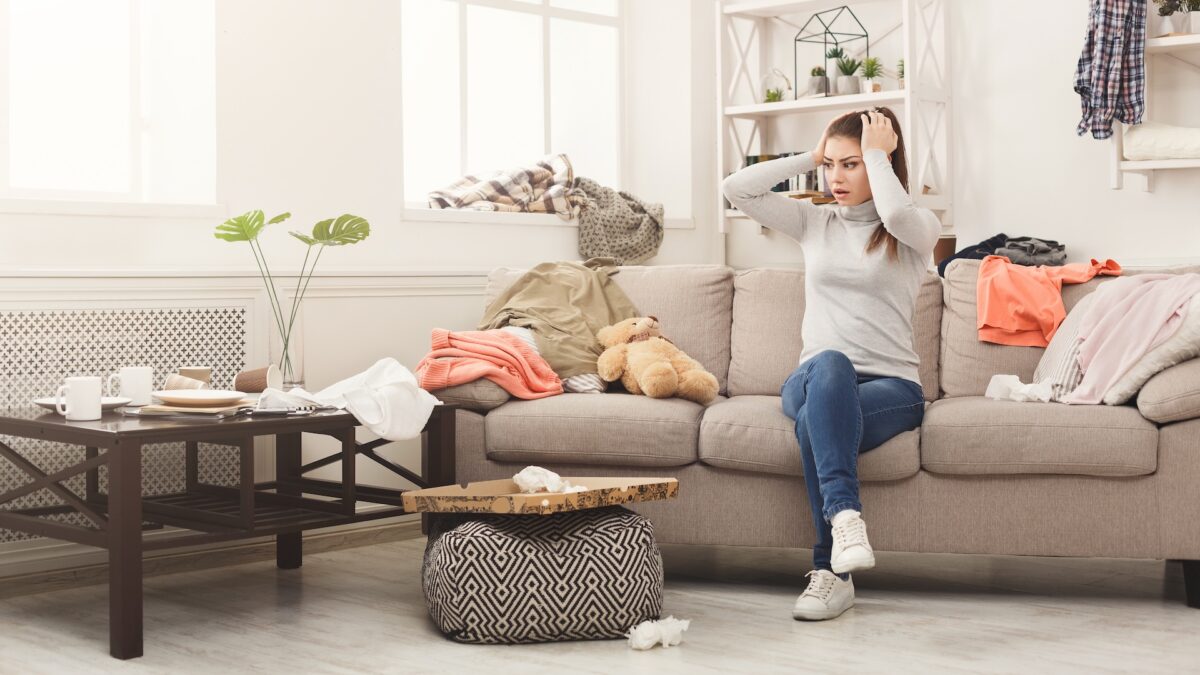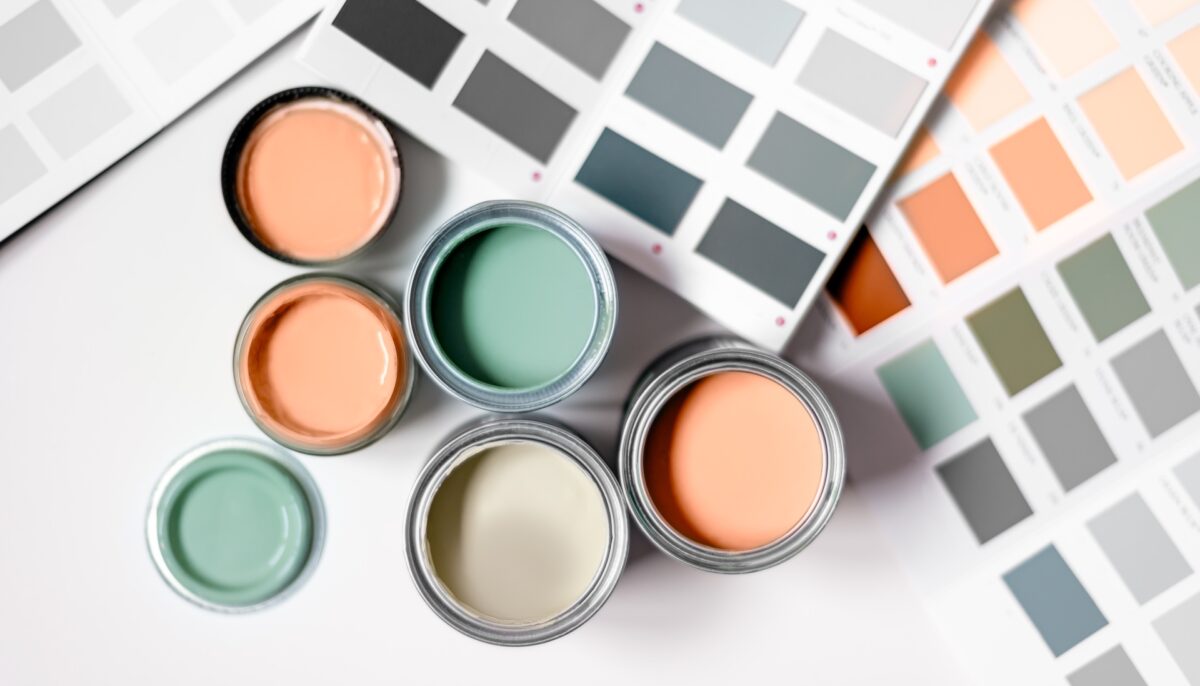Maybe you’re happily settled into your home’s style and wondering: what is my interior design style? Or maybe you’re trying to redecorate and unsure what cohesive style you want. Perhaps you’ve even taken an interior design style quiz and are trying to interpret the results. Either way, the options are seemingly endless. There are so many home aesthetics that it can be overwhelming.
Remember, personal style is just that: personal. You may end up with a little bit of this and a little bit of that – and that’s perfectly fine! Here are 10 of the most common design styles and their offshoots to help narrow your list.
Classic + Time-Proven
There’s a reason these styles have stood the test of time. If you love the classic feel of your grandfather’s hand-picked library filled with the smell of leather and tobacco, these traditional styles may suit you. Don’t be fooled, though; timeless doesn’t mean stale! It’s easy to add your personal touch to traditional styles.
1. Traditional
True traditional interior design is known for mimicking 18th and 19th-century designs, especially those found in Europe. Classic pieces that don’t follow fleeting trends can be found throughout, often featuring leather, silk, and velvet. Colors are plentiful, but you don’t have to stick to neutrals; bold and highly saturated colors are welcome in the traditional palette. Traditional can often farmhouse-styled east coast homes.
Furniture in a traditional homestyle design is typically heavy and often vintage. Well-patinaed leather sofas and dark, stained wood pieces take center stage. Large armoires and bookcases pair well with matching bedroom sets and velvet curtains. If your answer to the question what is my home decor style is, “well, it looks like…home!” Then you may already have a traditional-style home.
2. Mid-century modern
Though it was once a modern style, mid-century modern (or MCM) has become a classic. The look originated in post-WWII 20th century, and at the time incorporated traditional wood furniture with a futuristic feel. This resulted in long, geometric lines in teak, oak, rosewood, and walnut. Finding new replicas is easy, as the real stuff can carry quite a hefty price tag.
MCM favors utility over ornament, as well as bold accent colors. Even the more geometric and unusual furniture is still supposed to be comfortable. When building a room around key mid-century pieces of furniture such as coffee tables or credenzas – especially if they’re genuine vintage – try to match the wood types and finishes to keep the space cohesive.
One of the great benefits of MCM furniture is that it blends well with other modern styles, so you don’t have to have a home that looks like it hasn’t had an update in 50 years!
3. Farmhouse
If warm, dark colors make you feel claustrophobic, but you’re still looking for a classic style with cozy touches, consider the modern farmhouse style. Farmhouse is different from other traditional styles in that it brings bright light and lighter neutral color palette to the table, but it still sticks with vintage touches.
While the style itself may be more modern than the previous two, farmhouse harkens back to the lived-in feel of a restored, well, farmhouse. Exposed wood, burlap, and steel are made more comfortable with plenty of plants, shiplap, and large pieces of furniture. Reclaimed wood is a focus in this design style, including oversized barn doors. Vintage signs and wall art make great statement pieces in a farmhouse-styled room, as do light fixtures with exposed bulbs.
Sleek + Refined
Chic, straightforward, and peaceful, these minimalist styles have clean lines and often utilize natural features of the home and the outside world. These styles are for folks who want to find their zen at home and build a restful, even spa-like retreat from a chaotic world.
4. Modern
Modern interior design styles aren’t that modern – that’s contemporary! This style originated in the early 20th century and has evolved since then. A modern home focuses on clean lines and minimal furnishings. Shun ornamental design for natural hues and natural materials. Furniture and clutter should be as minimal as possible with plenty of open space.
This style works well with an open floorplan that has few walls dividing up the rooms. And, muted tones are your best bet if you really need an accent wall –elsewhere, emphasize neutrals instead.
5. Minimalist
Is modern design different from minimalist design? Subtly, yes! While modern refers to an actual design style originating in the early 20th century, minimalist is more of a design philosophy. The color palettes are similar and focus on cool neutrals that don’t distract the occupants. Clean lines, natural light, and minimal furniture are still at play. However, in a minimalist household, the function of every item is scrutinized. Purely decorative pieces and excessive clutter should be avoided at all costs. Maximize the usefulness of your home and use redecorating as an excuse to purge the belongings that no longer serve you.
Minimalist Sub-Categories
A sub-category of minimalist with a touch of holistic, Scandinavian styles, Japanese styles, and a hybrid called “Japandi” have increased in popularity over the years.
Scandinavian. Also known as Scandi, these styles are bright and airy, with no clutter to be found. While they originate from the same time period as MCM, Scandi uses lighter wood instead of dark teak and oak. Don’t think they aren’t cozy, though – textured knits, faux and real furs, and inviting sofas make a Scandi home inviting. Live plants bring a reminder of the outdoors, highly valued in Scandinavian society.
Japanese. Japanese style is similar in principle with mindful decorations and minimal clutter. Japanese interior design is intentional in curating a calm, soothing space that serves as a retreat from the chaos of the world. Blending interior and exterior is vital, so large windows and plants are important. Unique art pieces that are chosen for their significance can work as statement pieces, but choose carefully: it’s important to to pick pieces that are meaningful to you, not just aesthetically pleasing.
Japandi. As the name implies, Japandi is a modern mashup of Scandi and Japanese styles. Japandi emphasizes the Japanese principals of slowing down and enjoying the simple things that bring you joy, while utilizing Scandi’s clean lines and natural wood pieces. Japandi is minimalist, but inviting and very cozy.
6. Holistic
Holistic interior design is a nature-based style that prioritizes the well-being of the users. Holistic style can look fairly similar to some of the previously mentioned styles in that it can be more minimal and clean. A major distinction is that holistic welcomes the use of more colors. Choose colors intentionally and focus on their effects: green can encourage a connection with the natural world and bring joy, while yellow is optimistic and happy. Center items that make the users happy, and don’t forget to incorporate plenty of natural pieces such as large and plentiful plants and organic materials.
7. Industrial
While industrial style does emphasize sleek and clean elements, it doesn’t have the green thumb that the previous styles do! Industrial is either genuinely or made to look like it was used for manufacturing. Concrete floors, brick walls, exposed pipes, and ductwork are the mainstays of this style. Steel, glass, and unfinished wood define the furniture of an industrial-style home. Black and white work well in industrial home decor, but pops of color can be okay to liven it up!
Vintage photos, book collections, and plants can make it homier. When decorating for an industrial look, the flea market is your friend, and don’t be afraid to get creative. Anything from a vintage bicycle mounted on the wall to a DIY coffee table made of used palettes and metal piping can work in this style. Don’t forget your texture; a faux fur throw blanket can break up all the hard surfaces to up the cozy factor.
Bold + Unique
These styles are as unique as you are. Colors, patterns, and textures rule these bold interior design styles. March to the beat of your own drum because Scandi minimalism has no place in these homes!
8. Bohemian
Bohemian style is color, mixed fabrics, patterns, and incredibly unique. Flea market finds, handmade items, mix and match accent furniture. Bold patterns and truly following no trend are helpful here. Gem tones with textures like velvet and shag/faux fur are fun. Hand-painted items, gallery walls, unique plants in handmade pots, and materials like hemp and raffia are all mainstays of the bohemian style. Follow your heart, not the rulebook.
9. Maximalist
To some, it may look cluttered. But there’s a fine line between clutter and carefully curated! We’re talking gallery walls, shelves to display trinkets (themed is good), open cabinets, and layered everything. Bold accent wallpaper with patterns fills the space.
Maximalism can incorporate a mix of styles, though it tends not to be as “hippie” as bohemian. It can combine sleek modern styles with traditional leather furniture, a mid-century modern credenza with a quirky rug, and a statement sofa covered in assorted pillows.
Maximalist design is all about big and taking up space, even utilizing the ceiling. Sometimes (let’s face it, most of the time) maximalism is unnecessary, like covering the floor with multiple small, layering rugs. Personal collections work well like huge floor-to-ceiling displays of a record collection.
10. Eclectic
Eclectic style is different yet from bohemian and maximalist! It’s a little more dialed back from maximalist in that you’re likely not displaying hundreds of books in messy stacks but more like a mix of different styles focused around a core theme or color. Eclectic tends to be more curated than maximalist and bohemian.
Bold colors and unique wallpapers are still welcome but focus on matching them to other pieces in the room. If you love an emerald green velvet sofa as a statement but aren’t looking to use vintage French newspapers for wallpaper, eclectic may be your style over bohemian.
CORT Furniture Outlet Fits Your Style
No matter your style, you’re sure to find great deals and unique finds at CORT Furniture Outlet. Shop our ever-changing inventory online or in-store to find decor, furniture, and more at up to 70% off original retail prices.






